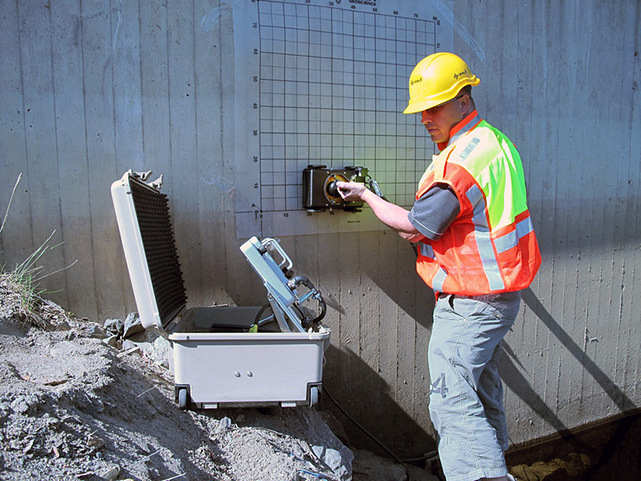RainierGPR Service Areas: Where We Provide Premier Concrete Scanning
RainierGPR Service Areas: Where We Provide Premier Concrete Scanning
Blog Article
Concrete Scanning: A Crucial Step In The Direction Of Making Certain Architectural Integrity and Security
In the world of construction and facilities upkeep, the significance of concrete scanning can not be overstated. By employing sophisticated innovation and approaches, concrete scanning serves as a pivotal device in making sure that the integrity and safety and security of bridges and buildings are upheld to the highest standards.
Importance of Concrete Scanning
Concrete scanning plays a critical function in making sure the architectural honesty and security of structures and infrastructure jobs. By utilizing advanced innovations such as ground-penetrating radar (GPR) and electromagnetic induction, specialists can non-destructively evaluate concrete frameworks to find possible flaws, spaces, ingrained things, and reinforcement format. This procedure enables very early detection of anomalies that can jeopardize the security of a framework, preventing costly problems and making sure the security of occupants.
Concrete scanning is particularly necessary during the preparation and construction stages of a job. Before boring, cutting, or coring right into concrete, scanning helps identify the precise places of rebar, post-tension cables, and various other ingrained aspects, decreasing the threat of unintentional hits that can result in architectural weak points. Furthermore, concrete scanning help in high quality control by verifying the density of concrete covers and detecting any type of disparities that may affect the general sturdiness of the framework. Ultimately, spending in concrete scanning solutions is not just a positive action to mitigate dangers yet also a basic step towards preserving the long-term safety and security and stability of structures and infrastructure.
Innovation for Concrete Examination

Benefits of Early Detection
Timely detection of architectural concerns can significantly minimize threats and make certain the long life of building jobs. By recognizing prospective problems early on in the building process, stakeholders can take aggressive steps to attend to concerns before they rise right into bigger and extra pricey troubles. One of the crucial benefits of very early detection is the prevention of architectural failures, which can pose serious safety and security risks and result in task hold-ups and monetary losses.
In addition, very early discovery permits timely repair work and upkeep, which can help extend the lifespan of the framework. By attending to concerns quickly, building groups can avoid costly fixings and even the need for premature substitute of structural elements. This positive technique not only conserves time and money however additionally boosts the total safety and sturdiness of the building job.
Furthermore, early discovery can improve project preparation and decision-making by supplying stakeholders with important insights into the problem of the framework. Armed with this information, project managers can make enlightened choices concerning building and construction timelines, techniques, and materials, resulting in more reliable and effective project end results.
Guaranteeing Structural Stability
Making sure the structural stability of a building and construction task is paramount to its safety and security and long life. Architectural security refers to the capability of a building or facilities to preserve its form and function under various lots and environmental conditions. To achieve this, detailed assessment and tracking of the framework are important. Concrete scanning plays a critical role in making sure architectural stability by my site discovering possible concerns get redirected here such as voids, delamination, or reinforcement rust that might endanger the honesty of the framework with time.
By using sophisticated scanning modern technologies like ground-penetrating radar (GPR) and electro-magnetic induction, building and construction specialists can non-invasively evaluate concrete frameworks to recognize locations of concern under the surface area. This aggressive strategy enables the very early discovery of weak points or problems, enabling punctual repair work or support to avoid architectural failings.
Normal concrete scanning throughout various construction phases and throughout the life cycle of a structure can help maintain its security, alleviate threats, and make sure the safety of occupants. By focusing on structural security via concrete scanning, building projects can improve their resilience and longevity, eventually adding to greater security and durability.

Protecting Against Essential Failures
To guard against disastrous occasions, careful surveillance and positive maintenance are important in avoiding essential failures within architectural frameworks. Spotting possible problems prior to they rise is essential to stop structural failures. Applying regular assessments, such as concrete scanning, can reveal hidden problems like gaps, splits, or deterioration that might jeopardize the stability of a framework. By utilizing innovative scanning innovations like Ground Passing through Radar (GPR) or Concrete X-ray, designers can non-destructively evaluate the problem of concrete and determine weak points that call for support or fixing - RainierGPR Service Areas.

Conclusion
Finally, concrete scanning plays a critical role in making sure structural integrity and safety by making use of sophisticated technology for very early detection of prospective issues. This aggressive strategy aids prevent important failings and makes certain the stability of structures. It is crucial to prioritize concrete evaluation as a conventional method to secure the longevity and security of structures and infrastructure.
Concrete scanning plays a crucial role in making certain the architectural integrity and safety and security of buildings and facilities tasks. In addition, concrete scanning help in quality control by confirming the density of concrete covers and detecting any kind of discrepancies that may influence the general toughness of the structure. Concrete scanning plays a critical duty in guaranteeing structural security by discovering prospective issues such as gaps, delamination, or support rust that might compromise the stability of the framework over time.

In conclusion, concrete scanning plays a critical role in making certain architectural integrity and safety by using sophisticated innovation for early discovery of possible concerns.
Report this page